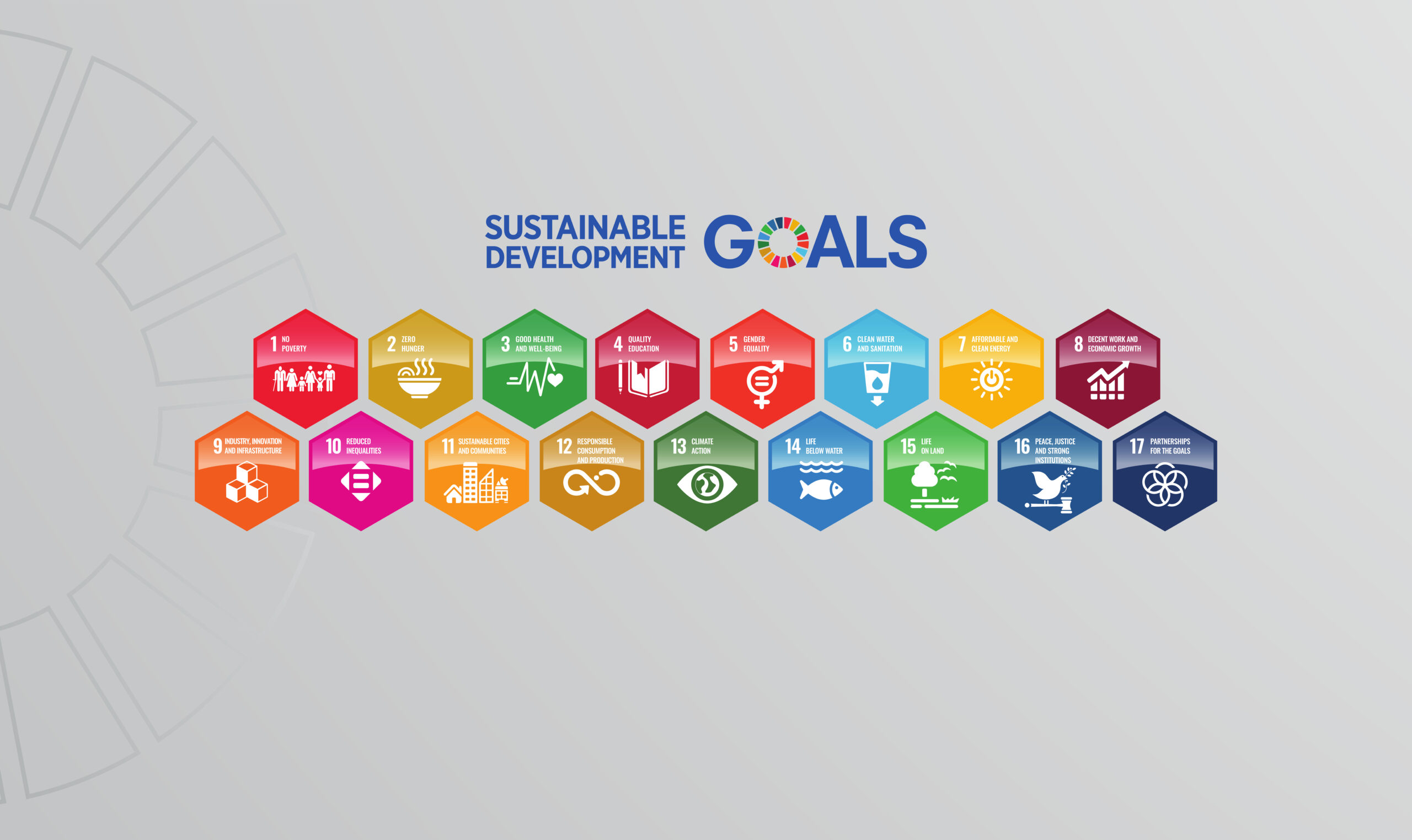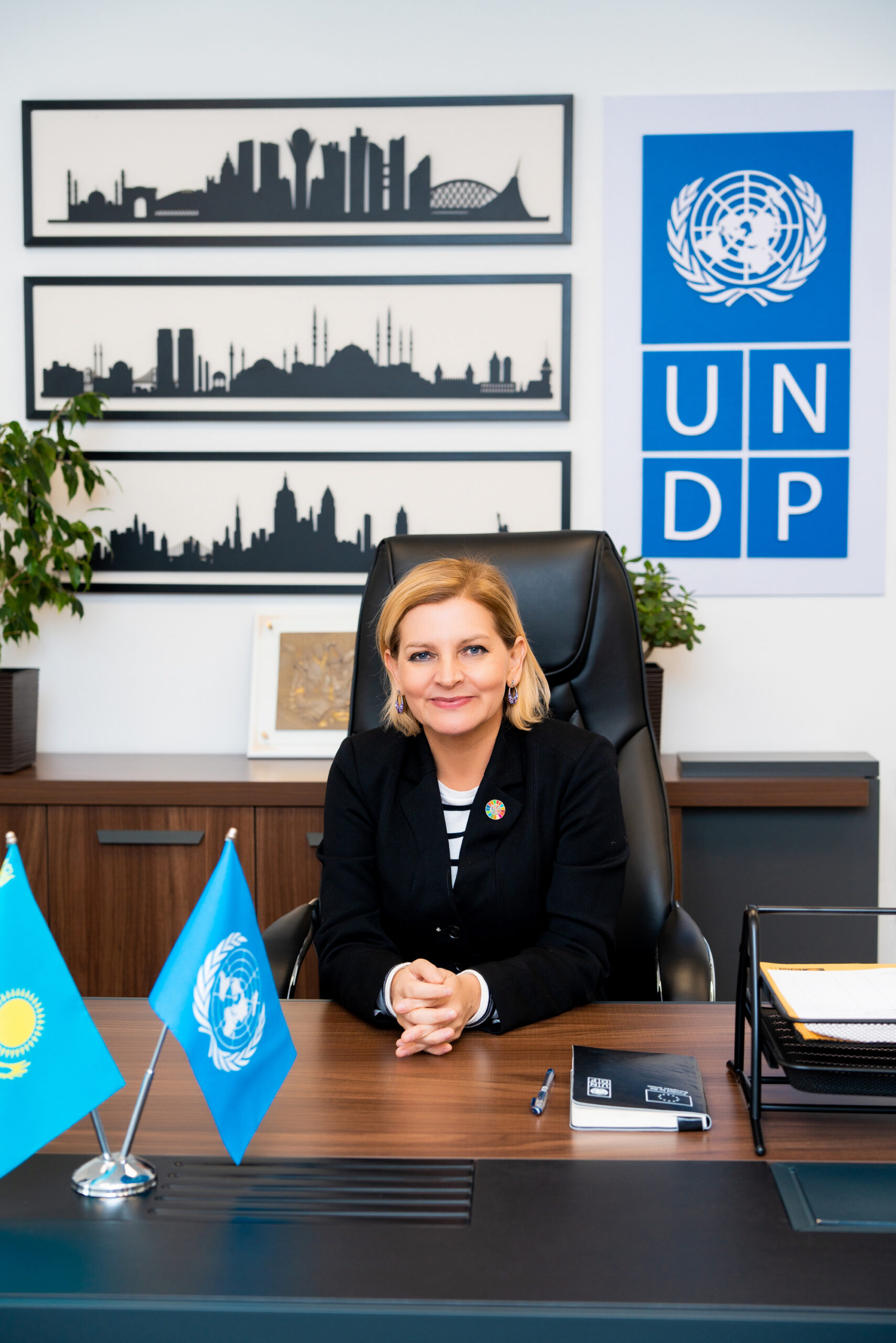As the Sustainable Development Goals (SDGs) Summit convenes in New York, the air is filled with anticipation. For this Summit marks a pivotal moment in our collective journey towards achieving the SDGs, setting the stage for transformative and accelerated actions leading up to 2030.

Photo credit: Shutterstock.
Convened by the President of the General Assembly, this Summit signifies the halfway point to the deadline set for realizing the 2030 Agenda for Sustainable Development and the Sustainable Development Goals (SDGs). It is the cornerstone of the High-level Week of the General Assembly. Its significance cannot be overstated.

Katarzyna Wawernia. Photo credit: undp.org.
Our world faces a multitude of complex interlinked challenges that demand our immediate attention. From the climate crisis to inequality, from health emergencies to peacebuilding efforts, the impact of these crises is felt in every corner of our planet. The 2023 SDG Summit is our collective response to these challenges, an unwavering commitment to address them head-on.
The Summit is expected to do more than just respond to crises; it is to reignite a sense of hope and optimism for the 2030 Agenda. It is a call to action, a reminder that while the road ahead may be challenging, our determination and unity can overcome any obstacle.
At this point, I would like to reflect on the progress made towards the SDGs in Kazakhstan and the challenges that still confront us.
The SDGs in Kazakhstan: focus on data availability, institutions capacity building and financing
Kazakhstan has made substantial progress in its pursuit of the SDGs. The country has laid a strong legislative foundation by integrating the SDGs into its state planning system, namely 87 crucial SDG indicators at the national level. These indicators are fully integrated into National Projects and Regional Development Programmes, thereby ensuring a clear path to achieving these global goals. By setting target values for all 87 indicators by 2025, Kazakhstan aims to ensure progress that hinges both on institutional improvements and legislation, and on adequate levels of financing.
To ensure Kazakhstan realizes the SDGs by 2030, a strong linkage needs to be created between the state planning system and budgetary processes through the SDGs’ principles. This entails an analysis and alignment of the budget through the lens of the SDGs. Through this exercise an effective approach will be found that measures the impact of funding volumes on progress across the relevant SDG indicators. Using this approach enhances the quality of monitoring, enables the causal relationships to be recognized and identifies potential risks to achieving target values in both the short- and long-term
A versatile approach that aligns with Kazakhstan’s SDG goals
Partnership between UN family and the Government has been a cornerstone in Kazakhstan’s journey towards the SDGs’ realization. Joint efforts have been diligently directed towards expediting progress through the implementation of integrated solutions. Rather than addressing individual SDGs in isolation, we concentrate on bridging the gaps between them, recognizing that these connections hold the key to success. An essential factor contributing to the achievement of SDGs was the government’s establishment of a responsive and efficient framework, which facilitated effective collaboration and coordination among different government agencies and the international community.
Efficient government coordination mechanisms enabled the UN country team to swiftly respond to government priorities, aiming to provide the most optimal solutions.
The deployment of innovative tools for assessing SDG integration, evaluating the effectiveness of financing policies and more has been instrumental in assessing the country’s SDG progress, identifying gaps and pinpointing limitations. Through the provision of focused technical assistance, the government promptly obtained the essential decision-making tools required to accelerate progress towards the SDGs.
During 2021-2022, UNDP in Kazakhstan, jointly with the Institute of Economic Research, conducted an analysis of 17 SDGs within the national budget, encompassing 169 associated targets. The analysis spanned 2019 to 2021 and, on average, successfully covered 80 percent of the state budget.
The results of this analysis shed light on the allocation of financial resources in Kazakhstan. Out of the 169 SDG tasks, only 99 targets, or 58.6 percent, received funding from the state budget, with the bulk of the funding being assigned to the following SDG areas:
– Poverty Eradication (SDG 1) – 23 percent of the state budget.
– Quality Education (SDG 4) – 16.1 percent of the state budget.
– Industrialization, Innovation, and Infrastructure (SDG 9) – 12.1 percent of the state budget.
Currently, one of our priorities is the further localization of the SDGs, with a focus on empowering local and regional governments to actively contribute to their realization. Through capacity-building workshops, we have equipped 150 local public servants with practical skills, enabling them to align local strategies and programmes with relevant SDGs.
Efficient financial and budgetary operations are the lifeblood of SDG localization. We are working closely with the Ministry of Finance to enhance the efficiency of the budgeting process. Our ultimate goal is to establish a self-sustaining financing framework, ensuring timely support for priority initiatives and financial resilience in times of crisis.
We have actively engaged with the legislative branch, facilitating the creation of a Parliamentary Commission. This institution will oversee and coordinate sustainability efforts within legislative processes, including budget alignment with the SDGs.
To support informed decision-making, we have developed the Information Panel on SDG financing, a unique tool providing transparency in resource allocation and decision-making that will be available for all government agencies, NGO or other entities interested in state budget allocation across the SDGs.
Building SDG Platform for Central Asia
The countries of Central Asia (Kazakhstan, Kyrgyz Republic, Uzbekistan, Tajikistan and Turkmenistan) have committed to achieve the 2030 Agenda and integrate Sustainable Development Goals (SDGs) into their national plans. The shared vision among Central Asian countries regarding the SDGs has paved the way for a significant regional initiative, the Regional SDG Platform, supported by funding from the European Union. The key focus of the SDG Platform is twofold: to boost knowledge-sharing across Central Asian countries and to identify common challenges and best practices for policy reforms. Both seek a single outcome, namely accelerating the SDGs’ achievement in the region.
The Central Asia SDG Platform aims to provide an integrated regional overview by linking the monitoring of SDG trends, SDG policies, SDG interlinkages, financing for SDGs and other elements. The Platform visualizes key SDG progress indicators to identify potential trends and hotspots within Central Asian countries. In this way vulnerabilities and areas of concern in certain localities can be spotted.
Reallocating resources for SDGs via new budgeting modes, financial strategies
Despite the progress made, challenges remain. In light of the 2023 results, Kazakhstan currently ranks 66th out of 166 countries in the SDG Index, scoring 71.6 out of a possible 100 points – a drop of seven positions from 2021, highlighting the need for greater efforts in aligning budgetary allocations with SDG objectives.
Of particular concern are the SDGs where Kazakhstan finds itself in the “red zone,” signifying significant challenges: SDG 2 “Zero Hunger,” SDG 7 “Affordable and Clean Energy,” SDG 13 “Climate Action,” SDG 15 “Life on Land,” and SDG 16 “Peace, Justice, and Strong Institutions”. Primarily, these are the SDGs that receive the least funding, with the exception of SDG 16.
In recent years, governments worldwide began using various budgetary approaches to achieve high-level and cross-sectoral priorities, such as “green” budgeting, well-being budgeting and gender budgeting. This is expected to gradually shift resource allocation towards these priorities, thereby optimizing results. Similarly, budgeting for the SDGs helps to align resource distribution with strategic development objectives, to overcome fragmentation and to ensure coherence in policies and actions within the country.
As we move forward, Kazakhstan’s commitment to the SDGs needs a robust financial strategy that takes into account the interconnectedness of these global goals and that also makes their realization within the national budget a priority. This approach will facilitate progress and set a precedent for other nations also striving to bridge the gap between sustainable development and budgetary priorities.
In conclusion, let us reaffirm our collective dedication to the SDGs. In this journey of transformation and accelerated action, let our actions resonate louder than our words, for it is through our unity and determination that we can bridge the gaps and foster the progress our world so urgently requires.

